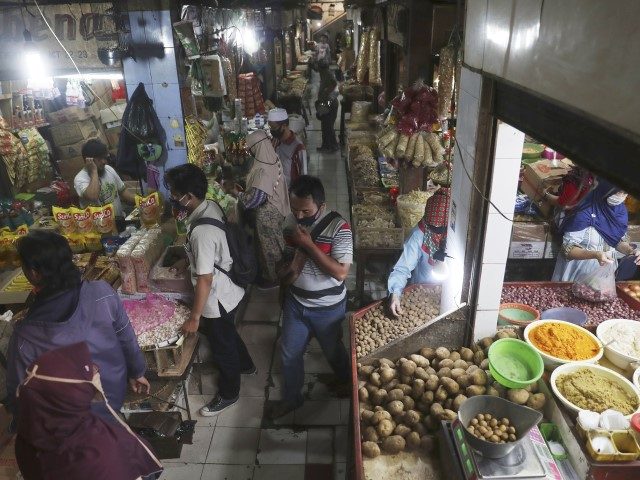Indonesia has experienced a shortage of palm cooking oil in recent weeks, caused, in part, by Russia’s latest war with Ukraine, Al Jazeera reported on Thursday.
“In recent months, the price of crude palm oil used has surged by up to 40 percent, the result of a confluence of factors, including Russia’s invasion of Ukraine, which supplies the majority of Europe’s sunflower oil. With the Ukrainian sunflower oil supply disrupted by the conflict, demand for other oils like palm oil has soared,” Al Jazeera explained on April 7.
Indonesia is the world’s largest producer and exporter of palm oil. Despite its seemingly abundant supply of the commodity, Indonesia has been significantly affected by the recent spike in demand for palm oil in the absence of alternatives like sunflower oil from Ukraine.
“After soaring prices of crude palm oil caused prices of cooking oil [derived from crude palm oil] to spike more than 50 percent, Indonesia’s government in February capped the price of a litre of oil at 14,000 Indonesian rupees ($0.93). To limit shortages, authorities also began limiting customers to 2 litres (68 fluid ounces) of oil per purchase,” Al Jazeera recalled on Thursday.
Enterprising Indonesians stocked up on cooking oil when Indonesia’s government announced the price cap in February, causing the average price of the product to triple by the time Jakarta lifted the measure on March 16.
“What happened was that cooking oil vendors didn’t want to sell their oil at such a low price, so they started hoarding it,” Posman Sibuea, a lecturer in food technology at Santo Thomas Catholic University in Medan, told Al Jazeera on April 7.
“Actually, there are stocks of cooking oil all over the country, but we just don’t know where they are,” he said. Sibuea further explained:
In Indonesia, cooking oil factories don’t usually produce their own palm oil, so they have to buy it from oil palm producers in the form of crude palm oil.
Producers can sell the palm oil at whatever price they want, and as palm oil prices increased globally, it became more difficult for cooking oil factories to buy the raw product. That is one of the key problems, this connection between the palm oil plantations and the cooking oil factories.
The cooking oil shortage proved deadly in mid-March in Indonesian Borneo’s East Kalimantan province. Two women died within days of each other of apparent sunstroke after they both attempted to wait in long lines for their government-mandated allotment of palm oil, the first in Nusantara city (on March 14) and the second in Samarinda city (on March 15).
Indonesia’s palm oil crisis seems puzzling, given the nation’s status as the globe’s top producer and exporter of the commodity. Part of the issue stems from Jakarta’s stipulation that only 20 percent of Indonesia’s palm oil production must be reserved for domestic consumption.
Uli Arta Siagian, a forestry and plantations campaigner at an environmental non-profit called WALHI, or The Indonesian Forum for Living Environment, explained Indonesia’s paradoxical oil shortage to Al Jazeera on April 7.
“The massive problem with palm oil is that the majority of oil palm plantations in Indonesia are owned by only a few people, maybe 20 at most,” Siagian revealed. Continuing, she said, “These people don’t just own the plantations either, but also the entire industry infrastructure such as the factories and everything else. So they have a monopoly on the industry and a monopoly on the price of palm oil.”
Indonesia’s government in mid-March more than doubled the maximum export levy on palm oil to “$375 per tonne as part of a plan to subsidise prices and distribute more than 200 million litres (6763 fluid ounces) of the product across the country each month,” Al Jazeera reported.
“On Tuesday [April 5], authorities announced the launch of a cash transfer scheme offering handouts of 300,000 Indonesian rupees ($20) to help lower-income citizens and restauranteurs purchase oil,” the Qatari news outlet relayed.

COMMENTS
Please let us know if you're having issues with commenting.